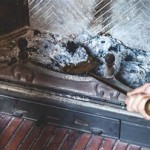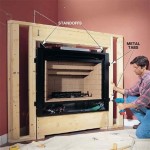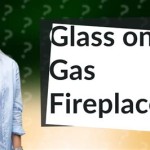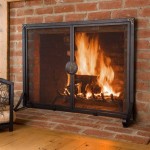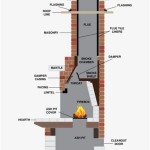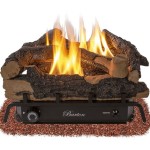Understanding the Fireplace Chimney Damper
The fireplace chimney damper is a crucial component of a functional and efficient fireplace system. Its primary purpose is to regulate airflow within the chimney, preventing heat loss from the home when the fireplace is not in use and controlling the draft during a fire. A properly functioning damper contributes significantly to energy savings and ensures a safer and more enjoyable fireplace experience.
A damper is essentially a door or plate that seals off the flue, the vertical passage within the chimney. When closed, it blocks the passage of air, preventing warm air from escaping the home during the heating season and cool air from entering during the cooling season. Conversely, when open, it allows smoke and combustion byproducts to vent safely out of the chimney during a fire.
There are several types of fireplace dampers, each with its own design and operational characteristics. Understanding these variations is essential for choosing the appropriate damper for a specific fireplace and chimney system, as well as for proper maintenance and troubleshooting.
Types of Fireplace Chimney Dampers
The two most common types of fireplace chimney dampers are throat dampers and top-sealing dampers. Throat dampers are located within the firebox, just above the firebox opening. Top-sealing dampers, as the name suggests, are installed at the top of the chimney, typically under the chimney cap.
Throat Dampers: These dampers are typically made of cast iron or steel and are hinged. They are operated by a handle or lever located inside the firebox. Throat dampers are a traditional design and are relatively inexpensive. However, they are often less effective at sealing the chimney compared to top-sealing dampers. Over time, throat dampers can warp or rust, leading to air leaks.
Top-Sealing Dampers: These dampers offer a tighter seal and are generally more energy-efficient than throat dampers. They are typically made of rubber or silicone and are operated by a cable that runs down the chimney and attaches to a handle near the firebox. When closed, a top-sealing damper creates an airtight seal at the top of the chimney, preventing air leakage, insect intrusion and rain from entering the chimney. They also help to prevent animals such as birds or squirrels from nesting in the chimney.
In addition to throat and top-sealing dampers, there are also alternative damper designs, such as inflatable chimney balloons. These balloons can be inflated to seal the chimney flue but are not intended to be used while a fire is burning.
Benefits of a Properly Functioning Damper
A well-maintained and properly functioning fireplace chimney damper provides several significant benefits. These benefits extend to energy efficiency, home comfort, and overall fireplace safety.
Energy Efficiency: By effectively sealing the chimney flue when the fireplace is not in use, a damper prevents heat from escaping the home during the winter and cool air from escaping during the summer. This reduced air leakage can lead to significant energy savings and lower heating and cooling bills. Studies have shown that an open or poorly sealing damper can contribute to a substantial percentage of a home's energy loss.
Improved Home Comfort: A properly functioning damper helps to maintain a consistent temperature throughout the home by preventing drafts and temperature fluctuations caused by air leakage through the chimney. This can make the home more comfortable, especially during extreme weather conditions.
Enhanced Safety: A damper helps control the draft during a fire, ensuring that smoke and combustion byproducts are properly vented out of the chimney. A properly adjusted damper prevents backdrafting, which can force smoke and carbon monoxide into the home. Maintaining the damper in good working order is essential to prevent such dangerous situations.
Maintenance and Troubleshooting
Regular maintenance of the fireplace chimney damper is crucial to ensure its continued functionality and longevity. This includes periodic inspection, cleaning, and lubrication of moving parts.
Inspection: The damper should be inspected at least once a year, preferably before the heating season begins. Look for signs of rust, corrosion, warping, or damage. Check the sealing surface for debris or obstructions that could prevent a tight seal. For throat dampers, inspect the hinge mechanism for smooth operation. For top-sealing dampers, examine the cable and sealing material for wear or damage.
Cleaning: Over time, creosote and other debris can accumulate on the damper, hindering its operation. The damper should be cleaned regularly to remove this buildup. Use a wire brush and a scraper to remove creosote from the damper and the surrounding area. Consider using a specialized chimney cleaning product to help loosen stubborn deposits. When cleaning, ensure the firebox is free of remaining ash and debris.
Troubleshooting: Common damper problems include difficulty opening or closing the damper, air leakage around the damper, and backdrafting during a fire. If the damper is difficult to open or close, try lubricating the hinge or cable mechanism with a heat-resistant lubricant. If air is leaking around the damper, inspect the sealing surface for damage or debris. If backdrafting occurs, ensure the damper is fully open and that the chimney is clear of obstructions such as bird nests or debris.
If the damper is severely damaged or cannot be repaired, it should be replaced. When replacing a damper, consider upgrading to a more efficient top-sealing damper to improve energy efficiency and home comfort. Consult with a qualified chimney sweep or fireplace professional for assistance with damper repair or replacement.

How To Open A Chimney Damper Traditional Fireplace Pros

Top Mount Vs Throat Dampers Fireplace Damper Portland Oregon

Fireplace Flue Dampers Ensure Optimal On

How Do Fireplace Dampers Work Zoro Com

Fireplace Damper Repair Full Service Chimney Kansas City

Nicholas Chimney Sweeping Stove Fireplace Services Vienna Virginia

Types Of Diffe Chimney Dampers Severna Park Pasadena Md

Stop Losing Heat Up Your Fireplace Chimney Ohmefficient

What Is A Chimney Damper Full Service

How To Use A Fireplace Damper The Right Way

